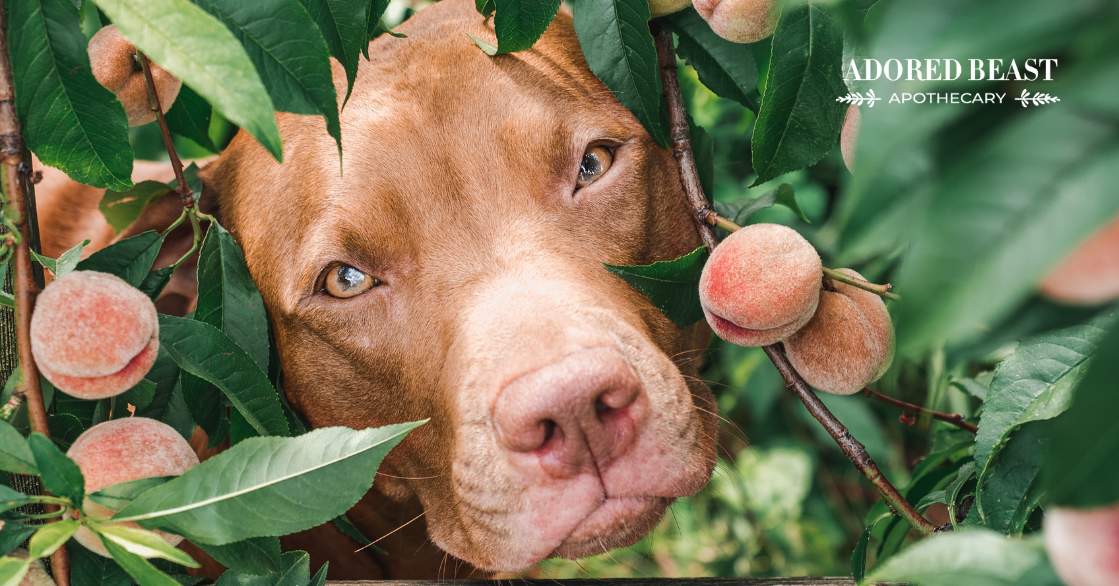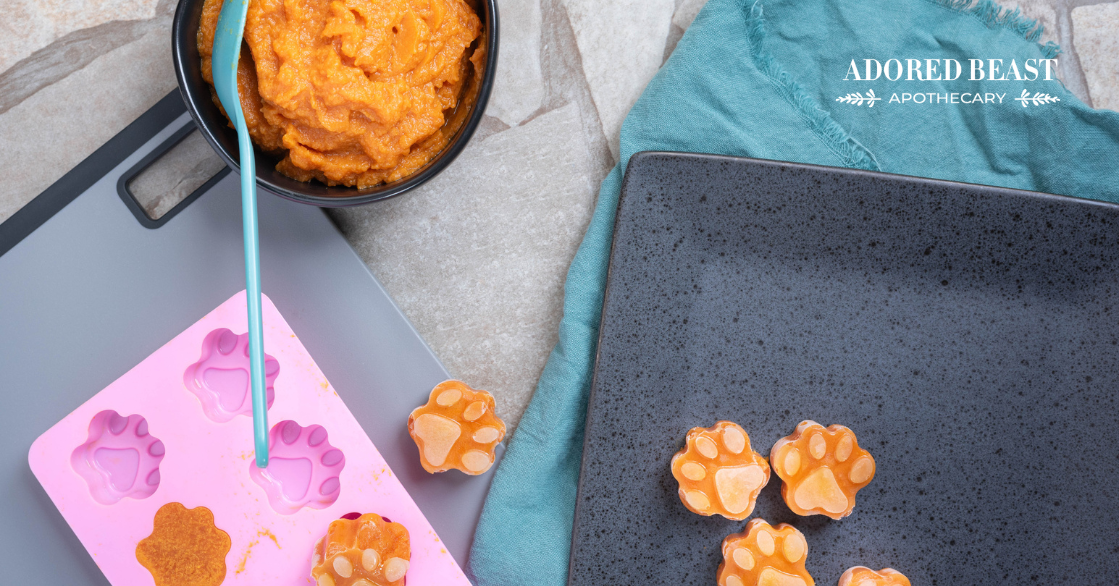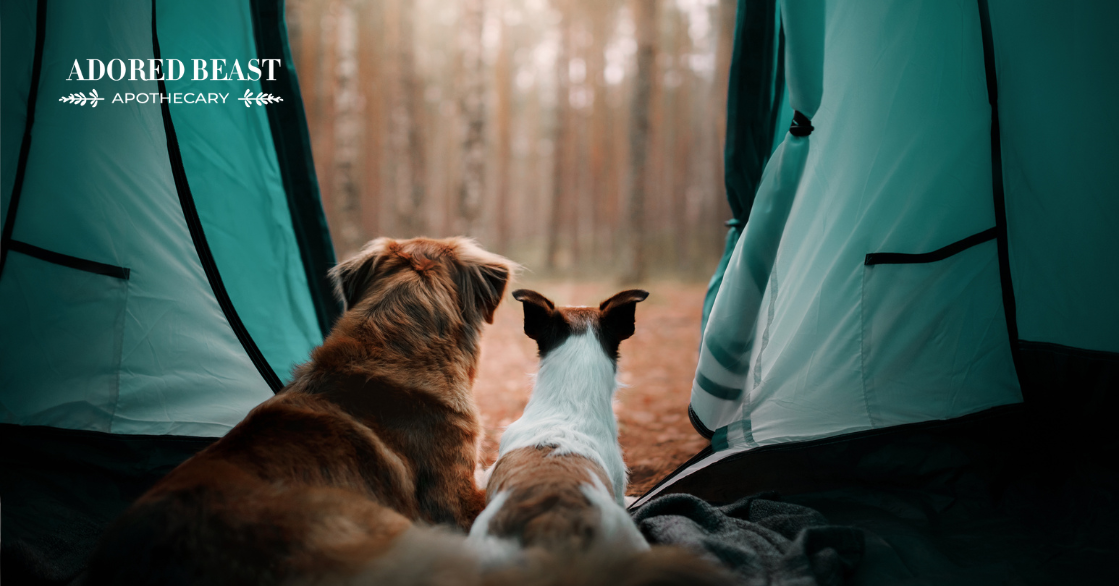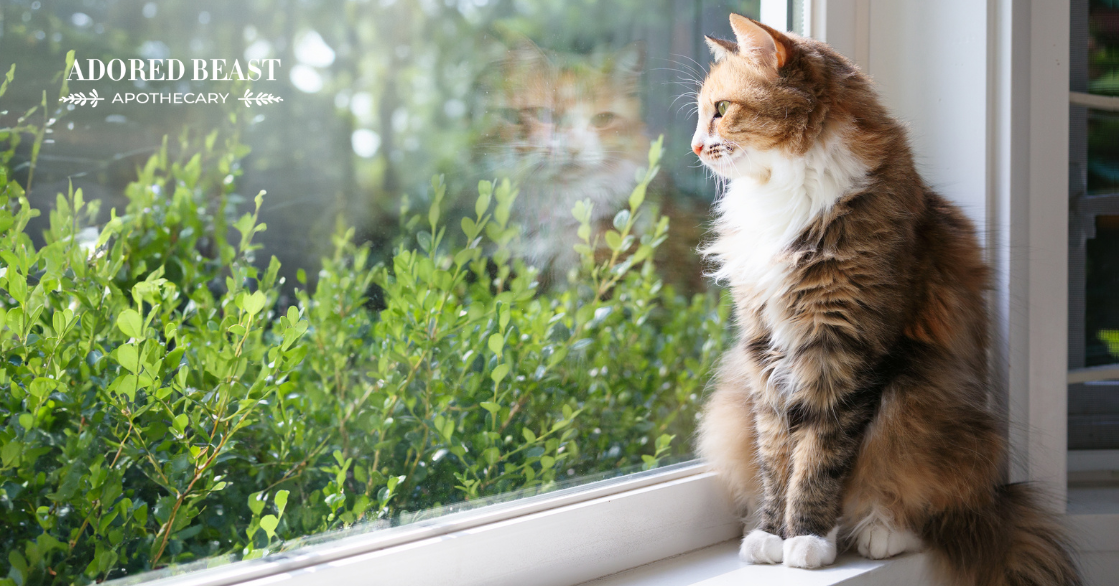In our opinion, the things we can do with homeopathy for pets far surpasses what we can do with humans. Our ability to try various remedies at the onset of illness or pain, to reach into our remedy toolkit and find the perfect remedy to match our animals’ symptoms, is incredible.
Adored Beast’s Founder, Julie Anne Lee, has been a student of homeopathy for decades. She has studied with some of the most world-renowned homeopaths across the globe, from North America, to Europe, to India. And when she had her holistic veterinary hospital, homeopathy was at the core of her healing philosophy.
The things Julie has seen with regard to homeopathy are amazing. But you too can use them at home to see incredible results. You just need to know how and what to do.
So, what exactly is homeopathy for pets, and how can you add it to your natural healing repertoire?
What is Homeopathy?
Homeopathic medicine views symptoms of illness as normal responses of the body as it attempts to regain health. The idea with homeopathy is that “like cures like.”
It was founded in the late 1700s in Germany by Dr. Samuel Hahnemann. Hahnemann was dissatisfied with the state of medicine in his time, and particularly objected to practices such as bloodletting. He believed that the medicine he had been taught to practice sometimes did the patient more harm than good.
How does Homeopathy Work?
Determined to find a better solution, Hahnemann discovered that if a substance in large doses causes a symptom in a healthy person, giving the person a very small amount of the same substance may cure the illness. Basically, homeopathy works by stimulating the body’s own natural healing capacity. The remedy triggers the body’s own healing forces.
Of course, this is a very simplified explanation – the theory and philosophy of homeopathy is far more complex. But, when it comes to homeopathy for pets, that’s really what you need to know to start.
Since then, it has become famous the world over for a wide range of illness and disease.
“According to the World Health Organization (WHO), homeopathic medicine is the second most widely used system of medicine in the world and is the fastest growing.”
Making a Remedy
A homeopathic remedy contains only a little of the active ingredient (usually a plant or mineral). These are known as highly diluted or “potentiated” substances. They’re made using a process of sequential dilution and succussion, which is a hard pounding or shaking.
Here’s what that looks like:
- To start, the substance is dissolved or finely ground into a double-distilled water/alcohol mix.
- The initial dilution is one part substance to 10 parts water/alcohol (1:10 or 1X), or one part to substance to 100 parts water/alcohol (1:100 or 1C) or one part substance to 1,000 parts water/alcohol (1:1000 or 1M).
- The solution is succussed (shaken or pounded), then a drop of the solution is diluted again 1:10 or 1:100 or 1:1000.
- The process is repeated as many times as necessary to achieve the desired potency. The higher the dilution, the stronger the remedy.
Homeopathy for Pets 101
“Thanks to homeopathic medicine, I’ve witnessed tens of thousands of life changing events with animals and their human families.” – Julie
Using homeopathy for pets is the same as using it for humans. The key is to match your animal’s symptoms to the symptom picture of the remedy, as accurately as possible. The closer the remedy matches the symptoms, the more likely it is that you’ll see a response. If you give the wrong remedy, no worries, nothing will happen.
As Julie explains, symptoms are incredibly important. They’re the body’s language to find the path of healing. When we get into trouble is when we suppress symptoms with drugs, and don’t address them. For example, if you’re feeling nauseated, and you take an anti-nausea drug, you’re telling the body “stop feeling this way,” but you’re not actually stopping what’s causing the nausea.
You can find homeopathic remedies online or your local health food store will also likely have them. They comes in a variety of potencies. For those new to homeopathy, go with a 30C potency and look for those in pellet form.
Homeopathic Dosing
First things first – and this is important. Homeopathy is not like a drug. The amount given isn’t based on weight, and it doesn’t matter if your animal has 2 pellets or 6. Yes, it’s hard to wrap your head around this one, but it’s just the way it works. As long as some of the remedy gets into your pet, the energy of the remedy will be able to get to work.
If your animal will take the pellets without issue by mouth, that’s an easy way to do it. The best or easiest way is to crush the pellets between two spoons and give them as a powder. Animals even have this perfect little pocket just inside their cheek that you can pour the remedy into. For cats, or pickier dogs, this might not be the easiest option, so you can also add a few pellets to a small cup of water, let it sit for 20 minutes, and give 1 teaspoon of the water to your animal. That works too.
Give the remedy and watch for any signs of improvement. If, after 30 minutes or so, you haven’t noticed a change, give it once more. If, after that, you’re still not seeing a change, try a different remedy.
Our Favourite Homeopathic Remedies
These are just a few of our favourite homeopathic remedies:
- Arnica – amazing for any trauma, good for general pain relief and treating musculoskeletal injuries
- Aconite – good for sudden onset situations, for pain, trauma, fear, shock, and stomach issues
- Euphrasia – commonly used to treat eye problems, such as conjunctivitis
- Nux Vomica – ideal for constipation and to restore balance to the digestive system after upset
- Sulphur – good for addressing skin problems, particularly skin allergies
- Silica – helpful in expelling foreign bodies, such as thorns or seeds, from the skin, and also for abscesses and sinusitis
- Arsenicum – great for helping with GI upsets, nausea, diarrhea
- Phosphorus – good for calming pets during thunderstorms and fireworks, great for diarrhea, nausea, and bleeding
- Rhus tox – use this one to help treat arthritis that’s better by motion, red swollen eyes and skin infections
- Bryonia – great for joint injuries or arthritis that are worse with motion
- Cantharis – can help to relieve the symptoms of cystitis, as well as help treat skin conditions and scalds and burns
- Symphytum – also known as ‘knitbone’, this one is ideal for fractures, and for joint, cartilage, ligament, and tendon injuries
“Supporting the body through health crises with homeopathy helps to address the core issues, thereby helping decrease the incidents leading into chronic disease.”












